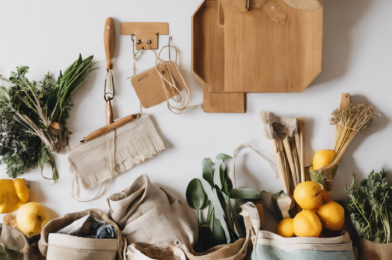The fashion industry is undergoing a sustainable revolution, and it’s about time! With an ever-growing awareness of the environmental impact of fast fashion, consumers are demanding more eco-friendly options, and brands are listening. Building an eco-conscious wardrobe is now easier than ever and offers a more ethical way to stay stylish. So, what does it mean to dress sustainably, and how can you achieve an earth-friendly closet?
Firstly, understand the issues within the fashion industry. Fast fashion has been criticized for its negative environmental and social impact, from the over-use of water and harmful chemicals to the unethical treatment of garment workers. These issues have led to a throw-away culture, with cheap, trend-led clothing ending up in landfills after only a few wears. To combat this, a growing number of brands are embracing sustainability, from using organic materials and low-impact dyes to implementing fair labor practices.
When it comes to building a sustainable wardrobe, there are a few key considerations. Firstly, shop with intention. This means being mindful of your purchases and only buying what you truly need and will wear. It also involves supporting sustainable brands that align with your values. Look for brands that use eco-friendly materials, such as organic cotton, linen, and recycled fabrics, and those that implement ethical manufacturing practices.
Another great way to shop sustainably is to turn to second-hand and vintage clothing. Thrifting has gained immense popularity in recent years, and for good reason. By buying second-hand, you’re giving pre-loved items a new lease of life and keeping them out of landfills. You’re also reducing the demand for new clothing, which lessens the environmental impact of the fashion industry. Whether you’re browsing your local thrift store or shopping online via vintage boutiques or resale apps, there are endless options to discover unique, one-of-a-kind pieces.






